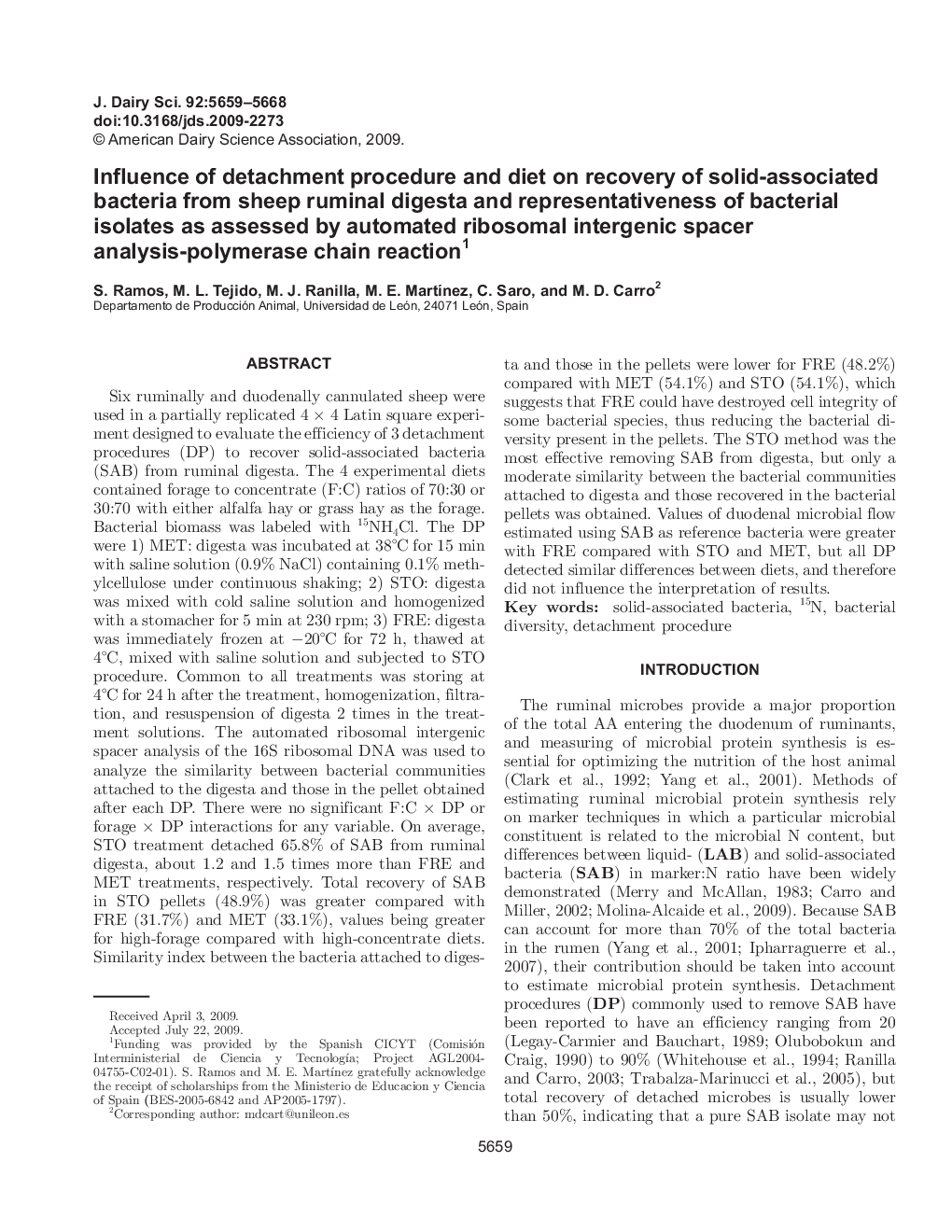| Article ID | Journal | Published Year | Pages | File Type |
|---|---|---|---|---|
| 2439128 | Journal of Dairy Science | 2009 | 10 Pages |
Abstract
Six ruminally and duodenally cannulated sheep were used in a partially replicated 4 à 4 Latin square experiment designed to evaluate the efficiency of 3 detachment procedures (DP) to recover solid-associated bacteria (SAB) from ruminal digesta. The 4 experimental diets contained forage to concentrate (F:C) ratios of 70:30 or 30:70 with either alfalfa hay or grass hay as the forage. Bacterial biomass was labeled with 15NH4Cl. The DP were 1) MET: digesta was incubated at 38°C for 15 min with saline solution (0.9% NaCl) containing 0.1% methylcellulose under continuous shaking; 2) STO: digesta was mixed with cold saline solution and homogenized with a stomacher for 5 min at 230 rpm; 3) FRE: digesta was immediately frozen at â20°C for 72 h, thawed at 4°C, mixed with saline solution and subjected to STO procedure. Common to all treatments was storing at 4°C for 24 h after the treatment, homogenization, filtration, and resuspension of digesta 2 times in the treatment solutions. The automated ribosomal intergenic spacer analysis of the 16S ribosomal DNA was used to analyze the similarity between bacterial communities attached to the digesta and those in the pellet obtained after each DP. There were no significant F:C à DP or forage à DP interactions for any variable. On average, STO treatment detached 65.8% of SAB from ruminal digesta, about 1.2 and 1.5 times more than FRE and MET treatments, respectively. Total recovery of SAB in STO pellets (48.9%) was greater compared with FRE (31.7%) and MET (33.1%), values being greater for high-forage compared with high-concentrate diets. Similarity index between the bacteria attached to digesta and those in the pellets were lower for FRE (48.2%) compared with MET (54.1%) and STO (54.1%), which suggests that FRE could have destroyed cell integrity of some bacterial species, thus reducing the bacterial diversity present in the pellets. The STO method was the most effective removing SAB from digesta, but only a moderate similarity between the bacterial communities attached to digesta and those recovered in the bacterial pellets was obtained. Values of duodenal microbial flow estimated using SAB as reference bacteria were greater with FRE compared with STO and MET, but all DP detected similar differences between diets, and therefore did not influence the interpretation of results.
Keywords
Related Topics
Life Sciences
Agricultural and Biological Sciences
Animal Science and Zoology
Authors
S. Ramos, M.L. Tejido, M.J. Ranilla, M.E. MartÃnez, C. Saro, M.D. Carro,
